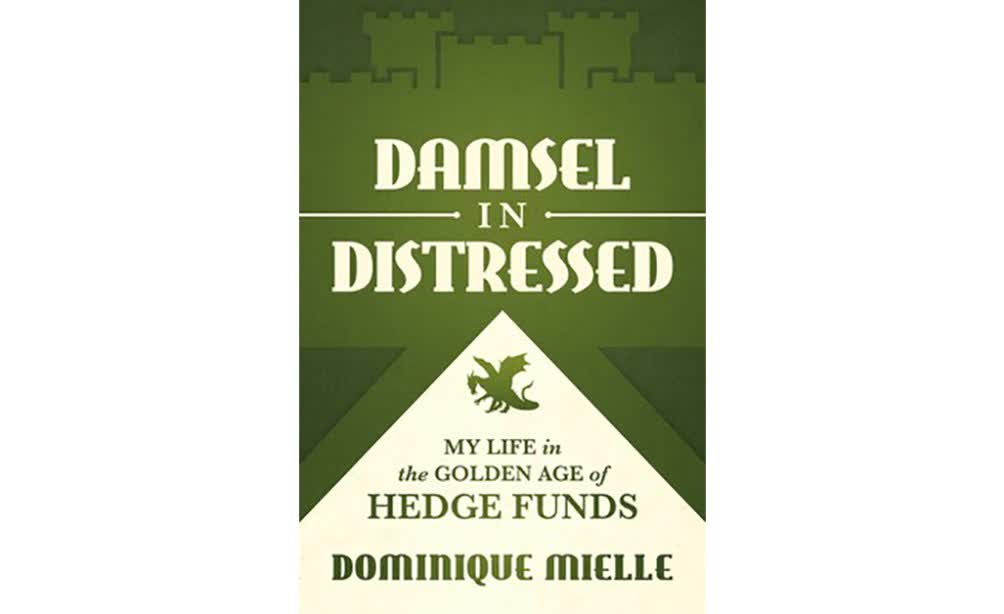Nikita Burdenkov/iStock via Getty Images

In Damsel in Distressed, Dominique Mielle educates and enchants with a mesmerizing memoir of her life — not only as a disciplined and consummate financial professional but also as an exceptional leader among hedge fund performers and innovators. None of that is apparent as the book begins, when she describes her early years in the industry and dazzles the reader with all the opportunities that in those days represented low-hanging fruit for hedge fund investors. Not only were the opportunities thrilling for her; they contrasted dramatically with her previous, grueling daily experiences as an investment banker, which inspired her to attend business school at Stanford in hopes of moving on to better prospects.
Mielle landed at Canyon Partners, LLC, and thrived there for 20 years, grappling with a plethora of investing challenges — from the wild ride of late 1998 to 2001 to the 2007–2008 global financial crisis, and beyond. Her career parallels the rapid growth in hedge funds, but she adds a distinctive factor: a keen ability to identify opportunity where no one else seems to, which emerged after she had served as an analyst in many situations and industries.
Mielle tells vivid stories of analysis across industries and through multiple bankruptcies that will delight analysts — even though many of the companies are gone for good. She honed her financial creativity through relentless analysis of situations, including rigorous risk assessment, and she clearly identified situations that were uncorrelated with any market or interest rate. Readers will be cheered to learn that Canyon management understood her hypotheses and recognized their potential for producing a profitable institutional product.
Mielle provides excellent perspective on the hedge fund industry’s evolution. For one, she clearly addresses its emergence and its initial “name” players in the early 1990s. Her explanations enable the reader to understand how these funds multiplied so rapidly (through 2008). Hedge funds thrived on market and information inefficiencies. Some of us remember the pre-EDGAR times that ended in 1996. Before then, we had to wait for companies to disseminate results or filings via fax or snail mail, and some operators invariably received those filings before others.
Mielle lays out the changes in compliance that challenged the industry players as time passed, from Regulation FD (fair disclosure) in 2000 to the 2010 Dodd–Frank Wall Street Reform and Consumer Protection Act, which took effect in 2016. The latter legislation affected collateralized loan obligation (CLO) structures by transforming a low-fee, capital-light CLO business into a low-fee, capital-intensive one. Mielle worked around this problem by inventing a special-purpose equity fund that preserved the CLO’s integrity and profitability. Called a capitalized manager vehicle (CMV), it retained the equity of the CLOs issued. The CMV retained part of the risk, as required by Dodd–Frank, but it was not capitalized with the firm’s own money.
The author addresses one theme repeatedly: The glory days of hedge fund investing have passed. Why? Up until approximately 2008, small, scrappy, nimble hedge funds could record outperformance and exceptional returns, materially exceeding the indices. Success, however, bred increased fund size, which became the enemy of outperformance. Competition increased, enabling investors to press for more-advantageous, performance-based fees. Faced with narrower profit margins, the hedge fund industry shifted to pursuit of asset growth rather than return.
The book contains many vivid images without a single page of pictures. The first one that will have many readers howling is the author’s encounter with Bill Sharpe. Mielle takes us back to school days we would rather forget with her description of the “Touchy/Feely” Interpersonal Dynamics course at Stanford. Her experience in Brest, France, is a hoot. Around the world she went, taking every meeting seriously, being meticulously well prepared, never complaining, but subjected to numerous big and little humiliations.
Damsel in Distressed excels for a multitude of reasons. The book provides an authentic, firsthand account and relates a long, rising, uninterrupted career at a single firm during the period of fastest growth in the hedge fund industry. Its author is a brilliant and broad-minded participant who in addition is one of the industry’s rare female leaders. She also proves to be tough, good humored, and resilient, both in her career and outside of it. I am “distressed” to read it for only one reason: It is the first substantial book I have read authored by a leading woman in finance since Karen Firestone’s Even the Odds: Sensible Risk-Taking in Business, Investing, and Life in 2016.
Disclaimer: Please note that the content of this site should not be construed as investment advice, nor do the opinions expressed necessarily reflect the views of CFA Institute.
Editor’s Note: The summary bullets for this article were chosen by Seeking Alpha editors.


Be the first to comment